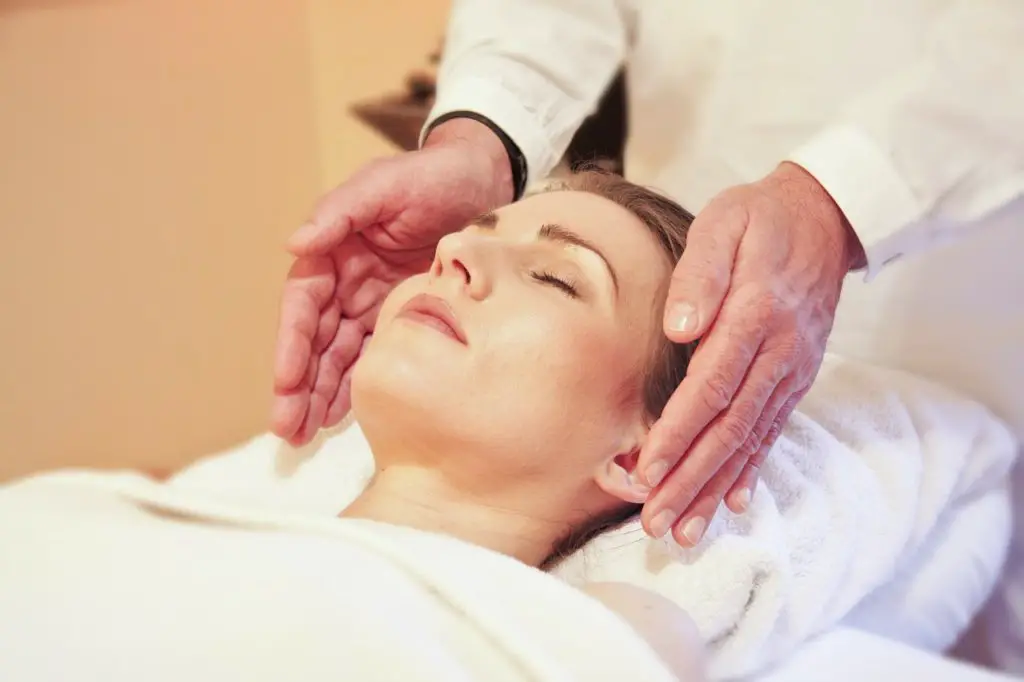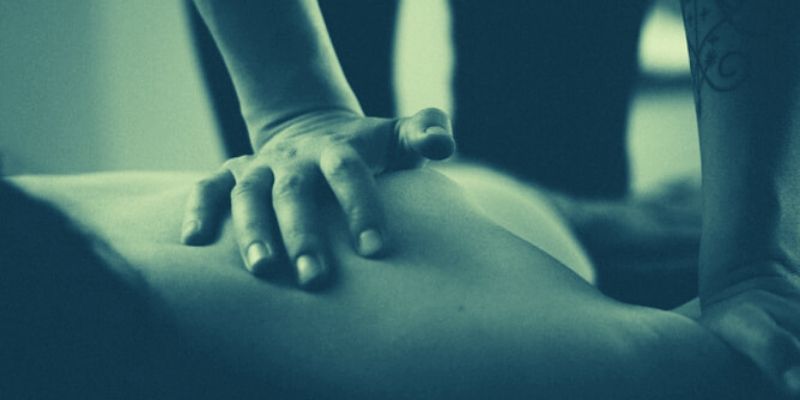Reiki and massage are both therapies that are widely practiced all over the world. They are perfect for relieving stress, soothing our minds, and relaxing our bodies. Both of these practices have numerous mental and physical health benefits that pair up to improve your quality of life greatly.
It is a common misconception that Reiki and massage as one and the same, with people, even believing that Reiki is simply an ancient name for a massage technique. However, this simply isn’t true. While Reiki and massage may have similar end results, the two practices couldn’t be more different. They follow contrasting methodologies, and even the means of execution aren’t alike at all.
In this blog, we will make a thorough comparison of Reiki Table vs Massage Table and look over the differences in each practice. We will also consider any areas where the two techniques may intersect and answer some of the frequently asked questions about the two.
Reiki Table vs Massage Table
Before going over the differences of the two tables, it is important to understand how these techniques differ. It will allow you to pick the best practice that offers you the most benefits as per your situation.
On the other side, if you plan to offer Reiki or massage services, this blog will help you make the right table decision as well.
How Reiki Works
The ancient Reiki practice requires the practitioner to use universal life energies to heal the mind and body. Your Reiki Master will scan the body for any breaks in energy and note any stagnant points. He will then move his hands just above the skin for Reiki attunement and tap into energy fields to restore balance.
The key difference between Reiki and a massage is that the former practice requires absolutely no touching at all. It is also generally a longer process as the master works to connect to your body’s energies and realign them.
How Massage Works
Massage therapists rely on making physical contact with the client’s body to work on different pressure points and relieve stress from muscles. They work on sore or contracted muscles by promoting them to relaxation.
Due to the pressure applied to the client and the need to reach various parts of the body, massage tables are built for sturdiness and have detachable features.
The Difference Between Reiki Tables and Massage Tables
You can use a Reiki table for massage. You can use a massage table for Reiki. Both will work, and many tables are advertised as designed for both massage and Reiki.
But there are a few differences between Reiki and massage, and if you’re a practitioner of one or the other, you may want to lean toward a table that is more specifically designed for your craft.
Reiki-Focused Tables

Most Reiki masters invest in something like a portable Earthlite Reiki table to conduct their sessions. This is because these are the perfect tables that offer high quality and comfort.
Reiki tables are generally portable and specially designed with the techniques of a Reiki master in mind.
Reiki sessions tend to take a while to harness the different energies, so the practitioner conducts them while sitting down. Thus, these portable Reiki tables have table braces and an area for the legs to rest comfortably.
You will also find Reiki tables typically lacking the adjustable headrests that most massage tables have. That’s because Reiki doesn’t require the practitioner to manipulate the client’s head, as is done during massage treatments.
One of the biggest factors in Reiki tables vs. massage tables is that the former has special panels for practitioners to comfortably rest their knees. You can’t find these panels on a typical massage table. The panels ensure there is no crossbones. You will also notice a lack of solid surface at the head or foot area, which aids the practitioner with his Reiki training.
It would be best if you looked through the following factors before investing in a Reiki table.
- Weight of the table.
- Quality of the metal or woodwork.
- Comfort level of the table.
- Price range
Some of the best brands to buy Reiki tables from are:
- Earthlite
- BestMassage
- Sierra Comfort Reiki Table
Massage-Focused Tables

Massage tables are crafted to position the client in the right manner for a relaxing massage experience. They are manufactured by taking into consideration optimal client comfort and massage therapist ergonomics. A typical portable massage table will have an adjustable face/head cradle, padded surface, and be made of easily-cleaned material. This is because massages require the therapist to use oils, creams, and other serums for a more rejuvenating and soothing experience.
Additionally, massage tables come with many ‘extras’ that Reiki tables generally don’t have. These add-ons made a massage table heftier and less portable. However, they allow the added benefits of increased movement and reaching all the right spots while massaging your client.
Massage tables are also built to withstand more pressure as the therapist kneads and massages different parts of the body. To ensure the table doesn’t give away under pressure, massage tables are equipped with sturdy cross braces for comfort and stability.
Some of the most common add-one for massage tables include:
- Crescent headrest.
- Detachable footrest.
- Detachable side armrests.
- Crescent face hole.
- Hanging armrests.
- Adjustable headrest with multiple positions.
- A caress platform.
Reiki Panels on a Massage Table
This is the part where Reiki tables vs. massage tables align. In recent years, manufacturers have been working on the portability of massage tables by adding some Reiki elements.
You often find Reiki panels on massage-focused tables , which were previously a signature feature of Reiki tables only, in typical massage tables.
With portable massage tables becoming more and more common, this similarity is only bound to increase further.
Client Comfort
While going over the process of picking the right table, you must have client comfort at the forefront of your mind. Your Reiki or massage table would be useless if it doesn’t offer optimal comfort! You need to ensure that your client is at ease when lying down on it.
The best way to ensure comfort is to buy the best possible quality that you can afford, regardless of whether it’s a Reiki table or massage table.
It will be a worthy investment as these are long-term assets and will last you for years to come. Consider the foam and upholstery, sheet quality, etc.
It shouldn’t go flat or fall apart after just a few therapy sessions.
Multi-purpose Tables
Lastly, think of whether you wish to confine your practice to just one technique or explore different ones. If you plan on practicing Reiki only, then a Reiki table would be perfect for you.
However, to offer your clients more options, it is better to invest in a portable massage table as it is multi-purpose. The best option to ensure you can conduct both techniques is to buy a high table with adjustable Reiki panels to place your knees.
Frequently Asked Questions
In this section, we clarify the most common confusions and queries that people had about the Reiki table vs. massage tables. We hope it clears things out for you and helps you make a well-informed decision about your next purchase.
Can You Use a Reiki Massage Table as a Simple Massage Table?
If you’re conducting an introductory massage session, then yes, Reiki tables can be used and vice versa. However, practitioners should keep in mind that using a Reiki table during long massages can become extremely uncomfortable for the client. It will also hinder the effectiveness of the massage as they won’t be able to get proper access to the various points of the body or apply adequate pressure.
On the contrary, using a massage table for Reiki will require the therapist to be on their feet for the entire session. It will tire them out and is likely to hamper their performance.
Do Reiki Tables Cost More Than Regular Massage Tables?
Although Reiki tables may sound ‘fancier’ to some, which insinuates that they would be more expensive, that certainly isn’t true. Both Reiki and massage tables come at various price points depending on the material (wood or metal), quality, and extra features they offer.
Conclusion
In the end, there is no particular right or wrong choice when comparing Reiki tables vs. massage tables. Both come with their own unique features that are manufactured as per the requirements of each practice. If you’re a Reiki master, it is always a wiser choice to opt for a Reiki table, which will allow you to rest comfortably as you focus on the client’s energies.
The best option for therapists that wish to offer multiple services is to invest in a hybrid of both. A table with adjustable headrests and knee panels will allow you to master the art of Reiki and offer your clients a good massage too.
Just make sure that the table is sturdy enough to take on applied pressure!





